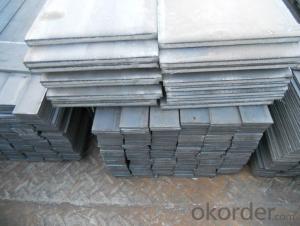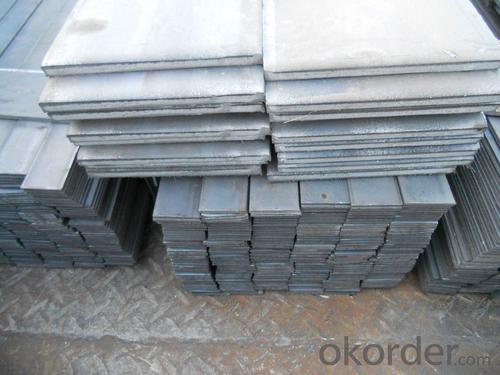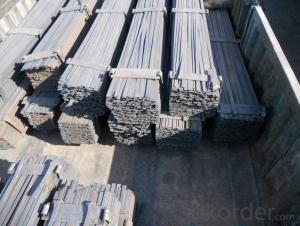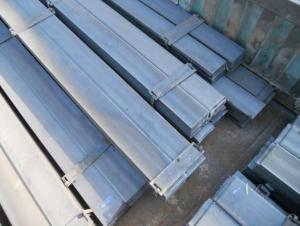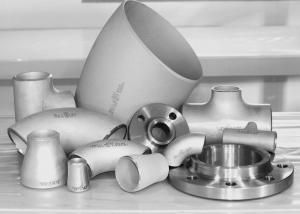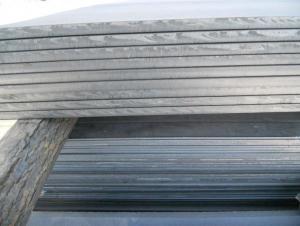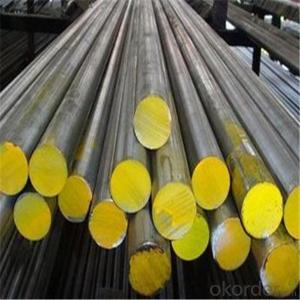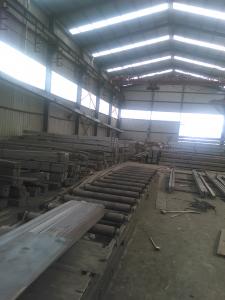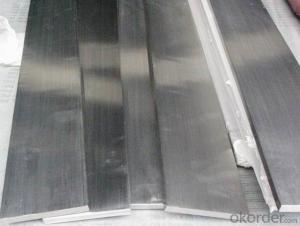Steel flat bars; flat steel high quality
- Loading Port:
- Shanghai
- Payment Terms:
- TT OR LC
- Min Order Qty:
- 25 m.t.
- Supply Capability:
- 10000 m.t./month
OKorder Service Pledge
OKorder Financial Service
You Might Also Like
Production Flow of STEEL FLAT SS400
The steel flat bar is made through three processes:
1.Feeding the material: Feeding the row material (the steel plate) to Slitting Line.
2.Slitting:The steel plate would be slitted into expected width by lengthways cutter.
3. Leveled and cutting: The plat bar would be ground into level by the grinder and then cut into required length
Tangshan flat bar processing plant
Our factory was founded in 2008, has been formed steel processing, trade, distribution, haihe river transportation and information service in the integration of modern company, the headquarters is located in the national steel rich district of tangshan city, hebei province, the first big province, covers an area of 20 mu, is apart from the beijing-shenyang high-speed 0.5 kilometers tangshan north exit, the geographical position is superior, the traffic is convenient.
The company owns the most advanced domestic shear steel equipment, plasma cutting equipment, can according to customer demand for steel plate kaiping, slitting, crosscutting, shear and winding and other personalized processing services, enable customers to save steel cut expenses and losses, greatly reduce the production cost, improve production efficiency. Its main products are steel billet, steel strip, flange plate and web plate, flat steel, open the tablet, etc.
Products applied to the export of flat steel, steel structure, steel plate, cars, ships, cement, steel girder plate socket, machinery manufacturing, bridge template, and other industries. Processing width: 10 mm - 1250 mm, the thickness of 1.5 mm - 16 mm, the length can be due to the needs of customers, annual processing capacity of 100000 tons. Product quality in line with the GB/T 709-2006carbon structure and hot rolled steel plate and strip of low alloy structure" of the relevant requirements.
In the increasingly market competition, the company in good faith integrity, mutual benefit and win-win principle sincerely look forward to cooperating with you!
Product description:
Processing capacity: 100000 tons/year; Slitting precision (width) : 0.5 mm or less
Raw material: Q235B, Q345B, Q235-1 b crosscutting precision (length) : 2 mm or less
Processing: the thickness of 2.0-16 mm; Shear length: 2000 mm above
Wide degree: 15-1250 - mm; Leveling precision: 1-2 MMM squared
- Q: How do steel flat bars perform in terms of fatigue resistance?
- Steel flat bars generally have good fatigue resistance due to their high strength and stiffness properties. They can withstand repeated loading and stress cycles without experiencing significant structural damage or failure. However, the specific fatigue performance of steel flat bars may vary depending on factors such as the steel grade, manufacturing process, surface finish, and design considerations.
- Q: How do you protect steel flat bars from UV radiation or sun damage?
- To protect steel flat bars from UV radiation or sun damage, there are several measures that can be taken. Firstly, applying a protective coating on the surface of the steel bars can help shield them from the harmful effects of UV rays. One common option for this is to use a high-quality paint that is specifically formulated for outdoor use. This paint should have UV-resistant properties to prevent fading or discoloration of the steel bars. Another effective method is to use a clear sealant or varnish that contains UV inhibitors. These products create a protective barrier on the surface of the steel, preventing the penetration of UV radiation and minimizing the risk of sun damage. It is advisable to choose a sealant that is designed for use on metal surfaces to ensure maximum effectiveness. In addition to the above measures, it is important to regularly clean and maintain the steel flat bars. This includes removing any dirt, dust, or other debris that may accumulate on the surface, as these can act as magnifiers for UV radiation, intensifying the damage. Regular inspections should also be conducted to identify any signs of corrosion or deterioration, as these can weaken the steel and make it more susceptible to UV damage. Lastly, if the steel flat bars are exposed to direct sunlight for extended periods, it is recommended to provide some form of shade or cover to reduce the intensity of UV exposure. This can be achieved by using awnings, canopies, or other types of protective structures that block or diffuse the sunlight. By implementing these protective measures, the steel flat bars can be safeguarded against UV radiation and sun damage, ensuring their longevity and maintaining their structural integrity.
- Q: Can steel flat bars be used for manufacturing automotive parts?
- Yes, steel flat bars can be used for manufacturing automotive parts. Steel is a strong and durable material that is commonly used in the automotive industry. Flat bars made of steel can be easily shaped, welded, and manipulated to create various automotive components such as brackets, supports, frames, and reinforcement structures. These parts require strength, rigidity, and resistance to impact and wear, which are all characteristics of steel. Additionally, steel flat bars offer excellent mechanical properties, including high tensile strength and good ductility, making them suitable for withstanding the challenging conditions and loads experienced by automotive parts. Overall, steel flat bars are a versatile and reliable choice for manufacturing automotive components.
- Q: Can steel flat bars be used in architectural designs?
- Yes, steel flat bars can definitely be used in architectural designs. Steel flat bars are versatile and can be used in a variety of ways to enhance the aesthetics and functionality of architectural projects. They can be used for structural elements such as beams, columns, and braces, as well as for decorative purposes like handrails, window frames, and furniture. Steel flat bars offer strength, durability, and a sleek, modern look that can complement a wide range of architectural styles. With proper design and fabrication, steel flat bars can be integrated seamlessly into architectural designs, adding both visual interest and structural support.
- Q: Are steel flat bars commonly used in the construction of transportation facilities?
- Yes, steel flat bars are commonly used in the construction of transportation facilities. Steel flat bars are versatile and strong, making them suitable for various applications in transportation infrastructure. They can be used for framing structures, reinforcing concrete, or as support beams in bridges and highways. Steel flat bars provide excellent load-bearing capacity and resistance to bending, making them an ideal choice for constructing transportation facilities that need to withstand heavy loads and harsh weather conditions. Additionally, steel flat bars are readily available in different sizes and can be easily fabricated to meet specific design requirements, making them a preferred material in the construction industry.
- Q: Can steel flat bars be used in the construction of storage racks or shelves?
- Yes, steel flat bars can be used in the construction of storage racks or shelves. Steel is a strong and durable material that is commonly used in the construction industry. Flat bars provide a sturdy and stable base for storage racks or shelves, ensuring they can support heavy loads and withstand the test of time. Additionally, steel flat bars can be easily welded or bolted together to create customized storage solutions that fit specific needs and space requirements. Overall, steel flat bars are a reliable choice for constructing storage racks or shelves due to their strength, durability, and versatility.
- Q: Are steel flat bars available in metric sizes?
- Yes, steel flat bars are available in metric sizes.
- Q: Are steel flat bars suitable for welding to other materials?
- Steel flat bars are indeed suitable for welding to other materials. The versatility of steel allows for easy welding to a wide range of metals and materials. In the construction, manufacturing, and fabrication industries, steel flat bars are commonly used and can be welded to aluminum, stainless steel, and even other types of steel. This welding process enables the creation of robust and long-lasting structures or components. However, it is imperative to properly prepare the steel flat bars by cleaning and preparing the surface to achieve a successful weld. In addition, selecting the appropriate welding method and filler material is crucial to ensure a strong bond between the steel flat bar and the other material. In summary, steel flat bars are a reliable choice for welding to other materials due to their strength, versatility, and compatibility with various welding processes.
- Q: Can steel flat bars be used for making sculptures?
- Certainly, sculptures can be made using steel flat bars. Steel, being a durable and versatile material, offers a wide range of artistic possibilities. The use of flat bars as a foundation allows for easy manipulation and welding, enabling the creation of various shapes and forms. Furthermore, intricate details and textures can be achieved by cutting, bending, and shaping the flat bars. Their strength and stability make them suitable for both indoor and outdoor sculptures, as they can withstand different weather conditions. In summary, steel flat bars are highly sought after by sculptors due to their versatility and ability to transform artistic visions into reality.
- Q: How can steel flat bars be protected from rusting?
- There are various methods available to protect steel flat bars from rusting: 1. Coating: One of the most common and effective ways to prevent rusting is to apply a protective coating on the surface of the steel flat bars. Different types of coatings, such as paint, powder coating, or galvanizing, can be used. These coatings act as a barrier between the steel and moisture, thus preventing rust formation. 2. Varnishing: Varnishing the steel flat bars can also provide a protective layer. This not only serves decorative purposes but also seals the steel's surface, preventing moisture from contacting it and causing rust. 3. Oil or Wax: Another method is to apply a thin layer of oil or wax on the surface of the steel flat bars. This creates a barrier that prevents oxygen and moisture from reaching the steel and causing corrosion. Regular reapplication may be necessary, especially in outdoor or humid environments. 4. Rust Inhibitors: Chemical compounds known as rust inhibitors can be applied to the steel flat bars to prevent rust formation. These inhibitors work by either forming a protective layer on the steel's surface or neutralizing the chemical reactions that lead to rust. They can be applied as a spray, dip, or added to a protective coating. 5. Proper Storage: Storing the steel flat bars in a dry and well-ventilated area is important to prevent rusting. Moisture is a major factor in rust formation, so it is crucial to keep the bars away from damp areas and direct contact with water. Using a dehumidifier or moisture-absorbing packets in storage areas can help maintain a dry environment. 6. Regular Cleaning and Maintenance: Regularly cleaning the steel flat bars and removing any dirt, dust, or contaminants can prevent rust formation. It is also important to inspect the bars for any signs of rust and address the issue promptly to prevent further damage. By implementing these protective measures, steel flat bars can be effectively shielded from rust, ensuring their durability and longevity.
Send your message to us
Steel flat bars; flat steel high quality
- Loading Port:
- Shanghai
- Payment Terms:
- TT OR LC
- Min Order Qty:
- 25 m.t.
- Supply Capability:
- 10000 m.t./month
OKorder Service Pledge
OKorder Financial Service
Similar products
Hot products
Hot Searches
Related keywords
